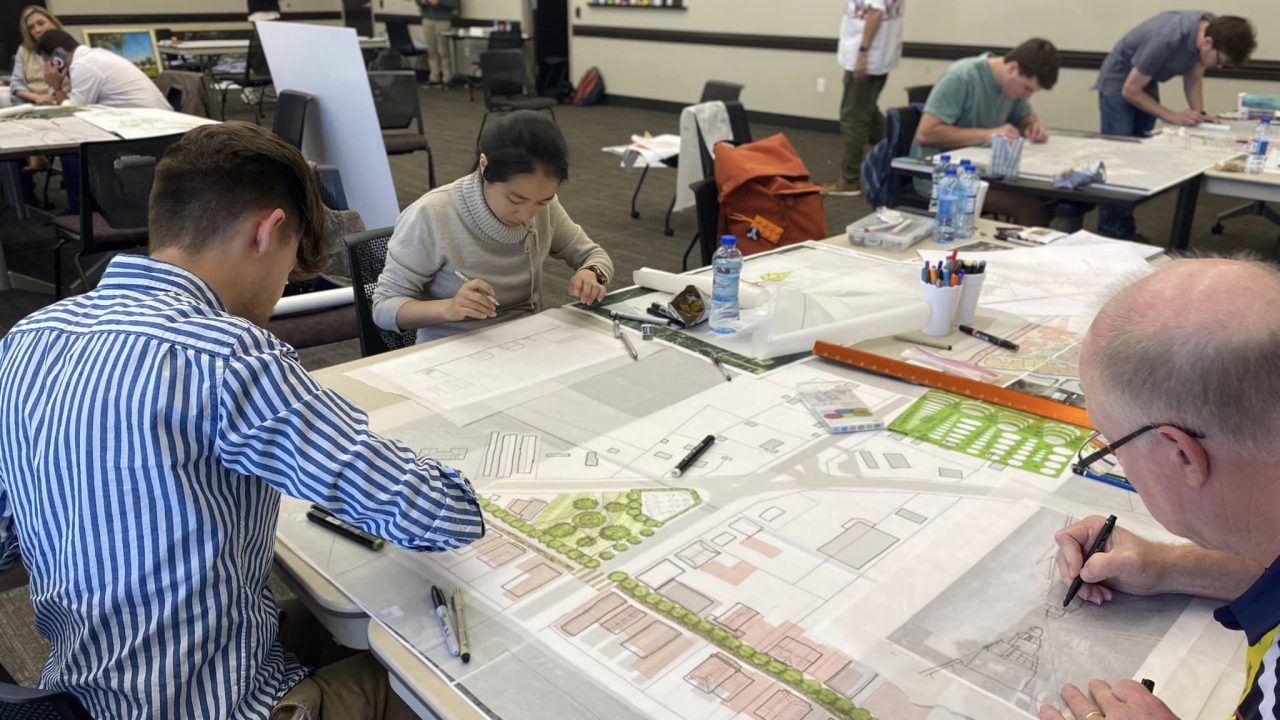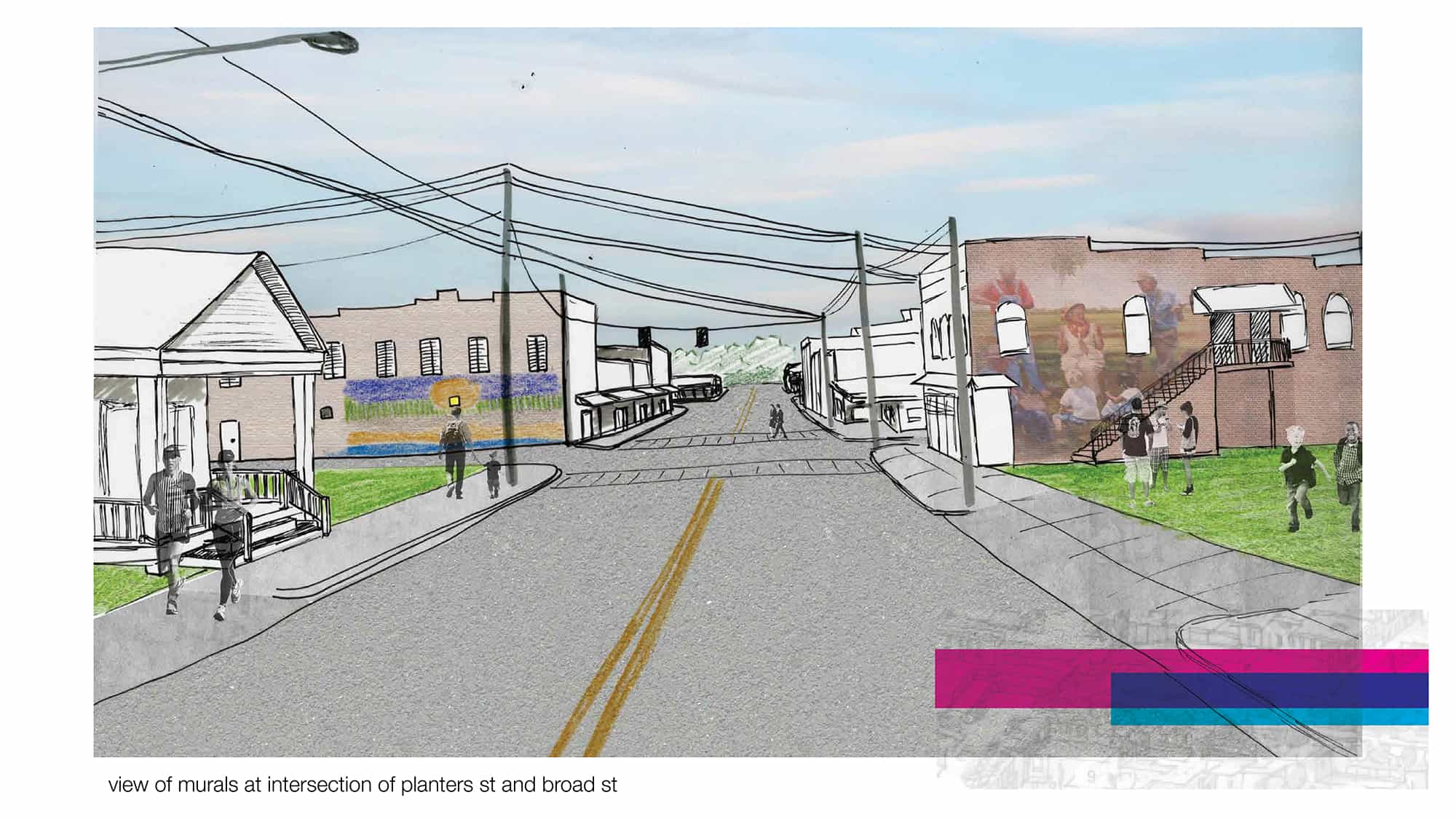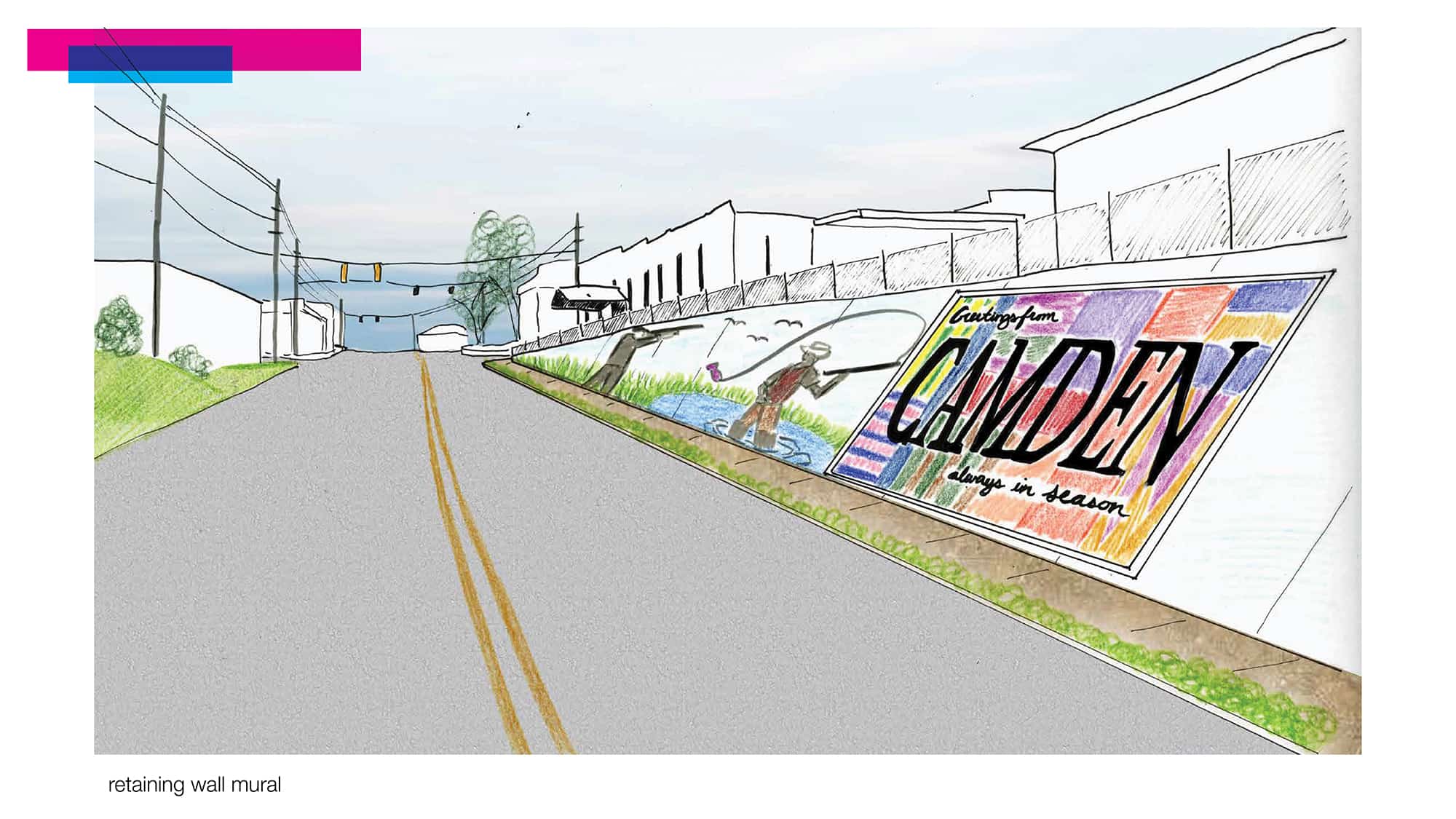Urban Studio and DesignAlabama Transforming Alabama Communities

Nearly 30 years ago, a partnership between the Center for Architecture and Urban Studies (Urban Studio) and DesignAlabama (DA) began when Urban Studio Founding Director Frank Setzer, AIA, and Philip Morris brought the organizations together.
Throughout the years, the organizations’ work has continued to impact communities throughout Alabama.
The work from this partnership illustrates a holistic approach towards community revitalization and sustainable development. These projects emphasize enhancing public spaces, improving pedestrian connectivity, preserving local heritage and fostering economic growth through strategic urban planning. Embracing both immediate and long-term goals, they focus on leveraging each area’s unique assets to create vibrant, cohesive communities that balance growth with environmental stewardship and historical preservation.
These initiatives showcase a commitment to collaborative planning, involving residents, officials and experts in crafting visions that address contemporary challenges while respecting each community’s identity. By prioritizing walkability, mixed-use development and cultural enrichment, the partnership’s efforts aim to enhance the quality of life for residents and attract visitors, demonstrating a model for small-town rejuvenation that could inspire similar strategies nationwide.
DesignAlabama’s mission aligns well with the work Urban Studio students do throughout the state. DA’s goal is “to advocate for collaboration of the design arts and their importance in creating and enhancing place in Alabama.”

An Evolving Relationship
DesignAlabama has “helped many communities address their design issues, resulting in increased economic development and enhancing quality of life.” The organization works with citizens and municipalities to help increase the desirability, profitability and livability in communities throughout Alabama.
In addition to his work at Urban Studio, Setzer also served as the Executive Director of DesignAlabama while the two organizations were housed under the same roof. Eventually, under the direction of Setzer, Urban Studio’s involvement in the Community Design Program increased.
The organizations held charrettes with design professionals to help communities address design, planning and revitalization opportunities. The participating communities received full reports detailing recommendations, strategies, illustrations and action plans to leverage their local assets and create a roadmap for revitalization. A vision for the future helps a community plan and act confidently as they grow.
A few years later, DesignAlabama relocated its offices to Montgomery as a more central location to serve communities throughout the state. At the time, Urban Studio absorbed the Community Design Program and increased the school’s engagement with the program and served more communities across the state.
According to Gina Clifford ’00 ’02, “Setzer also then encouraged architecture students to work and engage with citizens of urban and rural communities in the state through a program called the Alabama Design Community Program, which would evolve into DesignAlabama’s current DesignVision, which is the partnership we have with Urban Studio now. Following the retirement of Cheryl Morgan, FAIA, who had led the Urban Studio for years, DesignAlabama wanted to help continue her legacy and that of Setzer by facilitating programs that would unite architecture students with small communities across the state. This is where DesignVision was created.”
DesignVision — The 21st Century and Beyond
In 2019, the program and partnership formally became known as DesignVision. Since then, students have worked on projects in Camden, Wedowee and Pine Level, to name a few. The first project under the new DesignVision umbrella worked with the citizens of Camden, Alabama.
The DesignVision volunteers and students created a plan that detailed a multifaceted approach to revitalizing downtown Camden. It emphasized leveraging the city’s rich cultural heritage, particularly its reputation for art and outdoor recreation, to drive economic growth and community engagement. Key initiatives included enhancing pedestrian-friendly infrastructure, supporting local artists and cultural institutions and developing mixed-use spaces to attract visitors and residents alike. The strategy aimed to blend Camden’s historical character with new developments, ensuring a vibrant and sustainable future for the city.
Camden is one of the projects that particularly stands out to Clifford. As she explained, “Since the students’ time there, Camden has seen an amazing renewal of its downtown. I believe that simply getting citizens in a room together, many who had never talked to each other, was key. The engagement and sharing time helped citizens who had ideas, put those ideas to paper and then to realize that others in the town were hoping for the same thing and that others would support these ideas was a game changer. Camden’s aesthetics have changed, but so have their economics; their tax base has increased over 20% since our work there.”
The DesignVision partnership also allows alumni to give back to the school and help educate the next generation of architects and planners. Marshall Anderson ’97, of Design Initiative, worked as the facilitator for recent projects including in Abbeville, Pine Level and Wedowee.
In the fall of 2020, DesignVision worked on a plan to revitalize Wedowee by preserving its small-town charm while encouraging growth and community engagement. Their report focused on downtown development, enhancing connectivity within the region and diversifying housing options. Recommendations were set out with immediate, short-term and long-term goals, aiming to improve walkability, celebrate the town’s character and leverage its location for economic and recreational opportunities. The plan highlighted the importance of community involvement and strategic planning in achieving sustainable development.
Two years later, Urban Studio students found themselves in Pine Level. Their report addressed strategies for enhancing Pine Level’s main street and adjacent areas to foster community growth and improve quality of life. The vision included creating a pedestrian-friendly environment, supporting local businesses, and developing public spaces for community activities. The plan emphasized the importance of preserving Pine Level’s unique character while encouraging sustainable development, offering a blueprint for transforming the town into a more vibrant, cohesive and attractive place for residents and visitors.
As Anderson recalled, “In each case, the community has had a series of challenges for which the students are asked to help consider and offer planning and design solutions. The design solutions are oriented towards defining or reinforcing a sense of place unique to each community and how that definition can help catalyze redevelopment opportunities and economic development. The students have also helped communities consider growth and its implications on the existing fabric.”

Continuing Community Impact
One of the things Urban Studio has been known for is their commitment to communities throughout the state. In the mid-2000s, Urban Studio Director Cheryl Morgan worked with DesignAlabama to establish the Mayors Design Summit. Morgan served as their primary facilitator until her retirement in 2013, and it remains one of her most memorable projects from this partnership.
The Alabama Mayors Design Summit program brings statewide organizations and design professionals together with five mayors from a region of the state to address a design issue in their community.
As Morgan recalls, “This DA program is modeled on the Mayors’ Institute created by Mayor Joe Riley, former architect and mayor of Charleston, SC. He believed that the mayor is the ‘chief planner’ of any community and that a project-focused workshop with mayors and experts could be invaluable. Urban Studio’s reputation with small towns across the state, as well as knowledge and engagement with design, economic development and transportation professionals, plus other critical expertise, leveraged the potential to establish this program that remains one of DA’s flagship offerings. Mayors’ Summit has also been one of the threads of contact between DA and Urban Studio that has led to the engagement they now have with DesignVision.”
The Impact of Student-Professional Partnerships
Ultimately, though, this partnership brings students together with the same types of professionals and organizations they will work with after graduation. This is one of the recurring themes when people discuss the DesignAlabama and Urban Studio partnership.
From CADC Alum Marshall Anderson:

“From my perspective, one of the most important features of this program is exposing students to the larger context of design and its impact on the people who help create the communities in which we work. The students are given the challenge of not only proposing a design solution that is architecturally compelling but also providing a solution that includes the goals and aspirations of each constituency that may exist within a given community. It introduces empathy and humility into their process, a critical trait for any great architect to have in my opinion.
Selfishly, I enjoy being involved because the DesignVision workshops combine several of my interests in a single exercise. Community engagement, mentoring, planning, design and everyday problem-solving are all a part of the work, and it is usually condensed into a relatively short period of time, which adds a level of urgency and energy to the project which makes it unique. As opposed to a lot of our work, that we don’t see to its fruition until several years have passed, the DesignVision workshops provides the selected community with a collective vision for its future as well as road map for how to bring the aspirations to reality.”
From DesignAlabama’s Gina Clifford:
“I hope that the students take away a love for small Alabama communities and an understanding of the impact a common vision through their work can have on a community. I hope that students begin to understand the importance of the work that DesignAlabama does and will come back to serve as part of our teams in our other technical assistance programs as they begin their professional careers.
I hope it creates a desire in them to stay and work in Alabama.”
Want to learn more about the Urban Studio experience?
See more in:
Outreach,
Student Experience,
Urban Studio
Related people:
Alex Krumdieck,
Jennifer Cloe